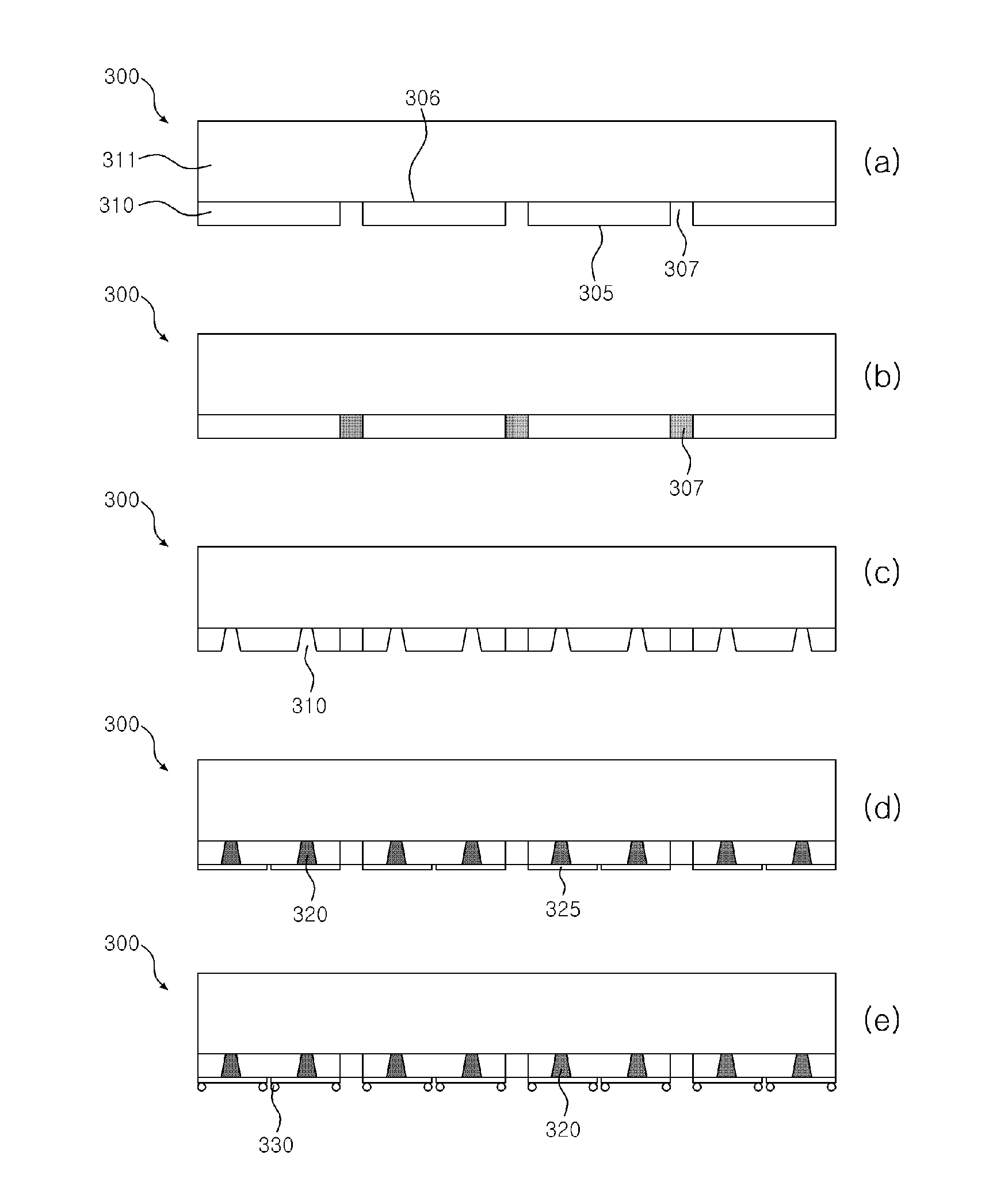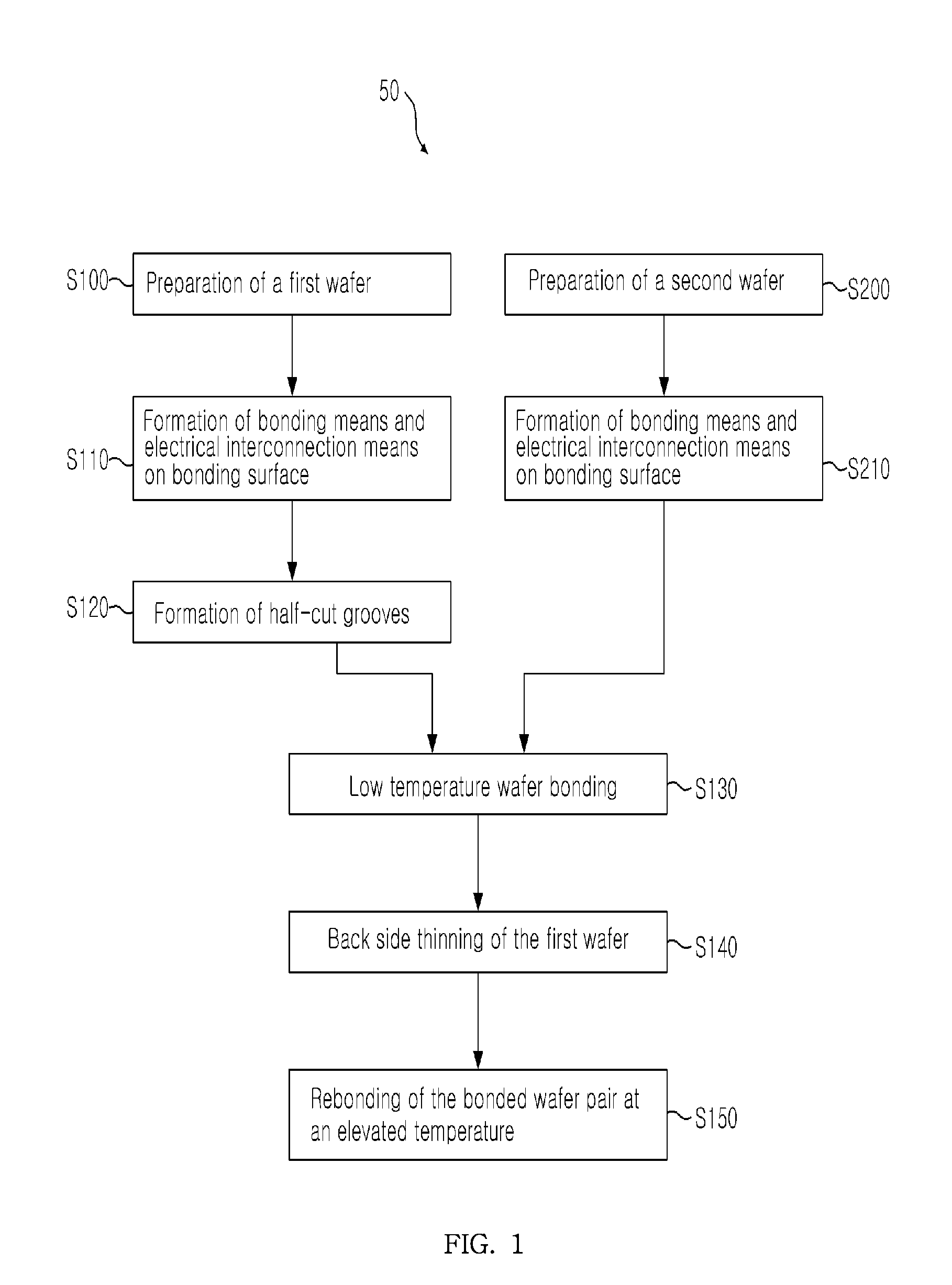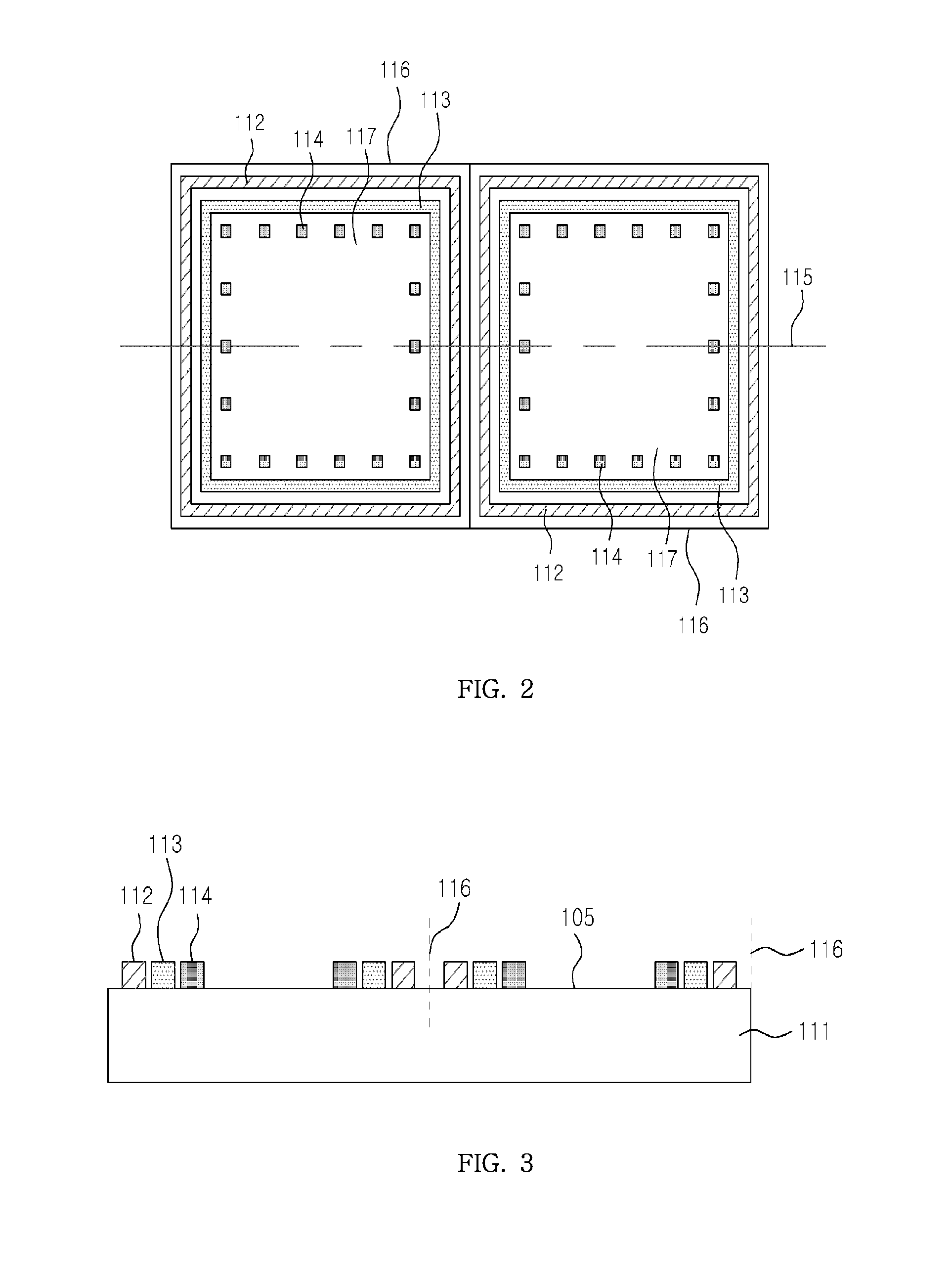Method for Manufacturing Hetero-Bonded Wafer
a technology of hetero-bonded wafers and manufacturing methods, applied in the direction of electrical equipment, semiconductor devices, semiconductor/solid-state device details, etc., can solve the problems of debonding, bow/warp cracking, debonding, etc., to solve high cost, and increase the first bonding strength. , the effect of solving the thermal stress problems of hetero-bonded wafers
- Summary
- Abstract
- Description
- Claims
- Application Information
AI Technical Summary
Benefits of technology
Problems solved by technology
Method used
Image
Examples
Embodiment Construction
[0030]Before describing embodiments in detail, it is to be understood that the invention is not limited to specific materials, methods of wafer bonding, and application area of hetero-bonded wafers. The embodiments will be described more in detail hereinafter with reference to the accompanying drawings, in which preferred embodiments of the invention are shown. Furthermore, like reference numerals designate corresponding parts throughout the several views.
[0031]FIG. 1 is a flow diagram illustrating a method 50 for manufacturing a hetero-bonded wafer according to an exemplary embodiment. The method comprises: i) step S100 preparation of a first wafer and step S200 preparation of a second wafer to be bonded with each other; ii) step S110 formation of bonding means and electrical interconnection means on the bonding surface of the first wafer, and step S210 formation of bonding means and electrical interconnection means on the bonding surface of the second wafer; iii) step S120 formati...
PUM
 Login to View More
Login to View More Abstract
Description
Claims
Application Information
 Login to View More
Login to View More - R&D
- Intellectual Property
- Life Sciences
- Materials
- Tech Scout
- Unparalleled Data Quality
- Higher Quality Content
- 60% Fewer Hallucinations
Browse by: Latest US Patents, China's latest patents, Technical Efficacy Thesaurus, Application Domain, Technology Topic, Popular Technical Reports.
© 2025 PatSnap. All rights reserved.Legal|Privacy policy|Modern Slavery Act Transparency Statement|Sitemap|About US| Contact US: help@patsnap.com



